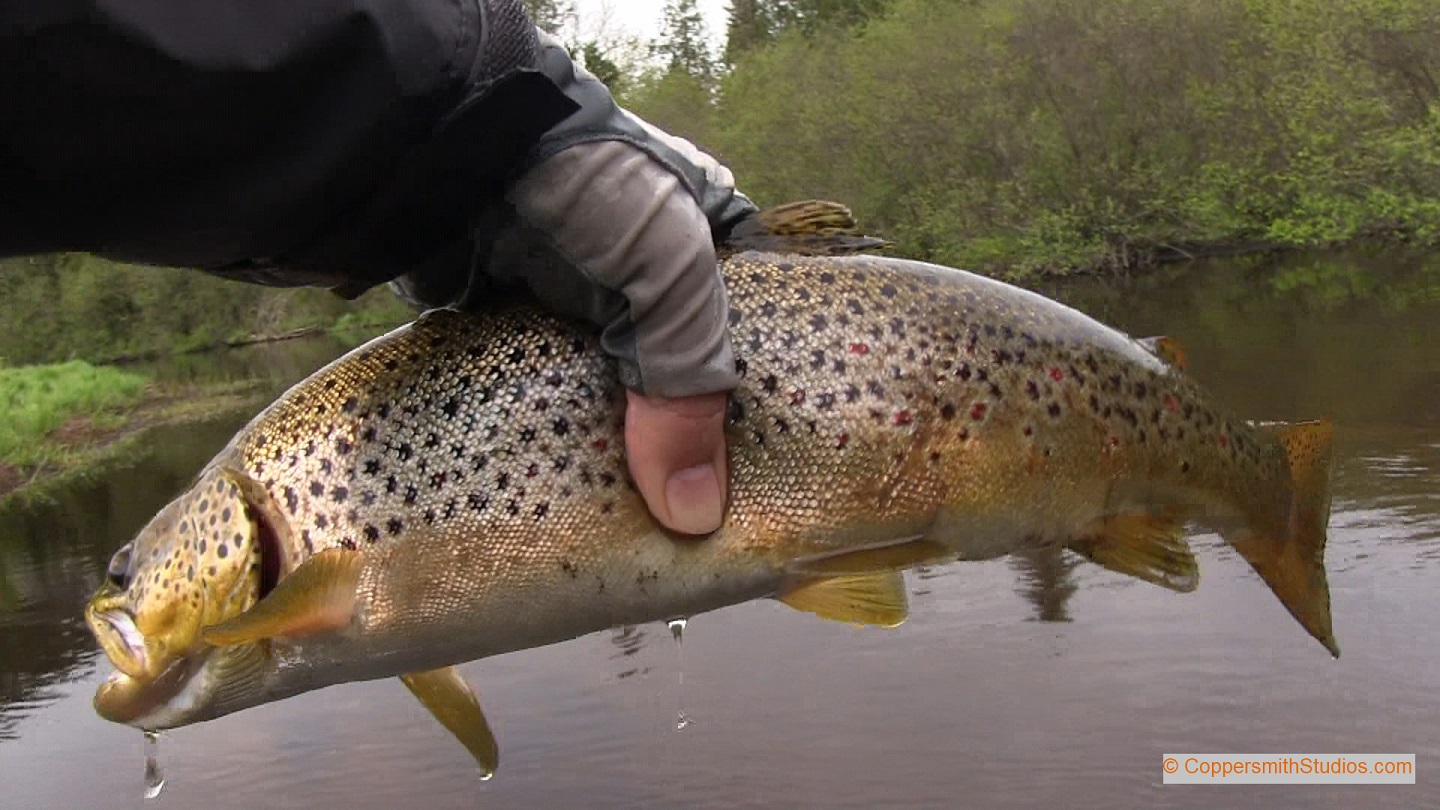 |
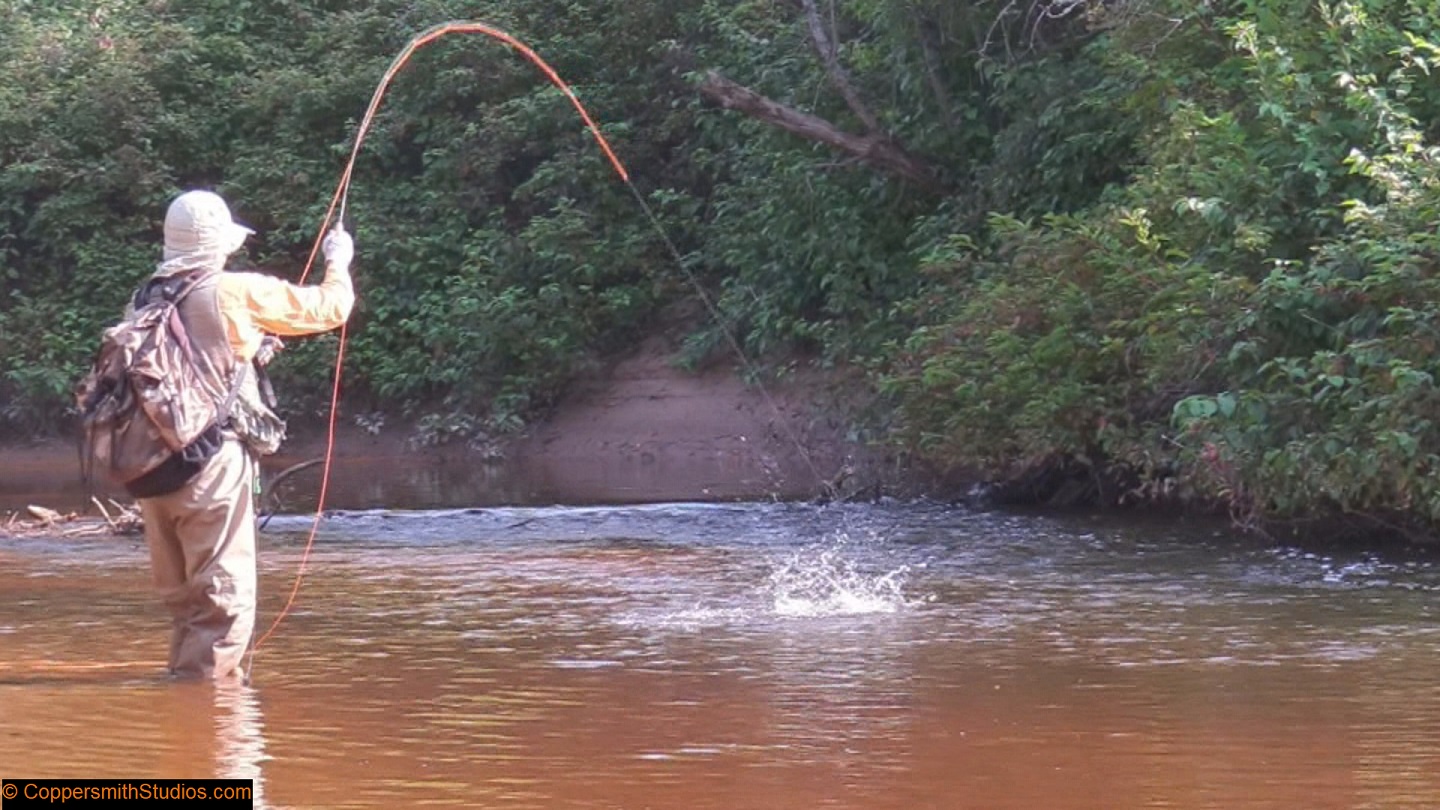 |
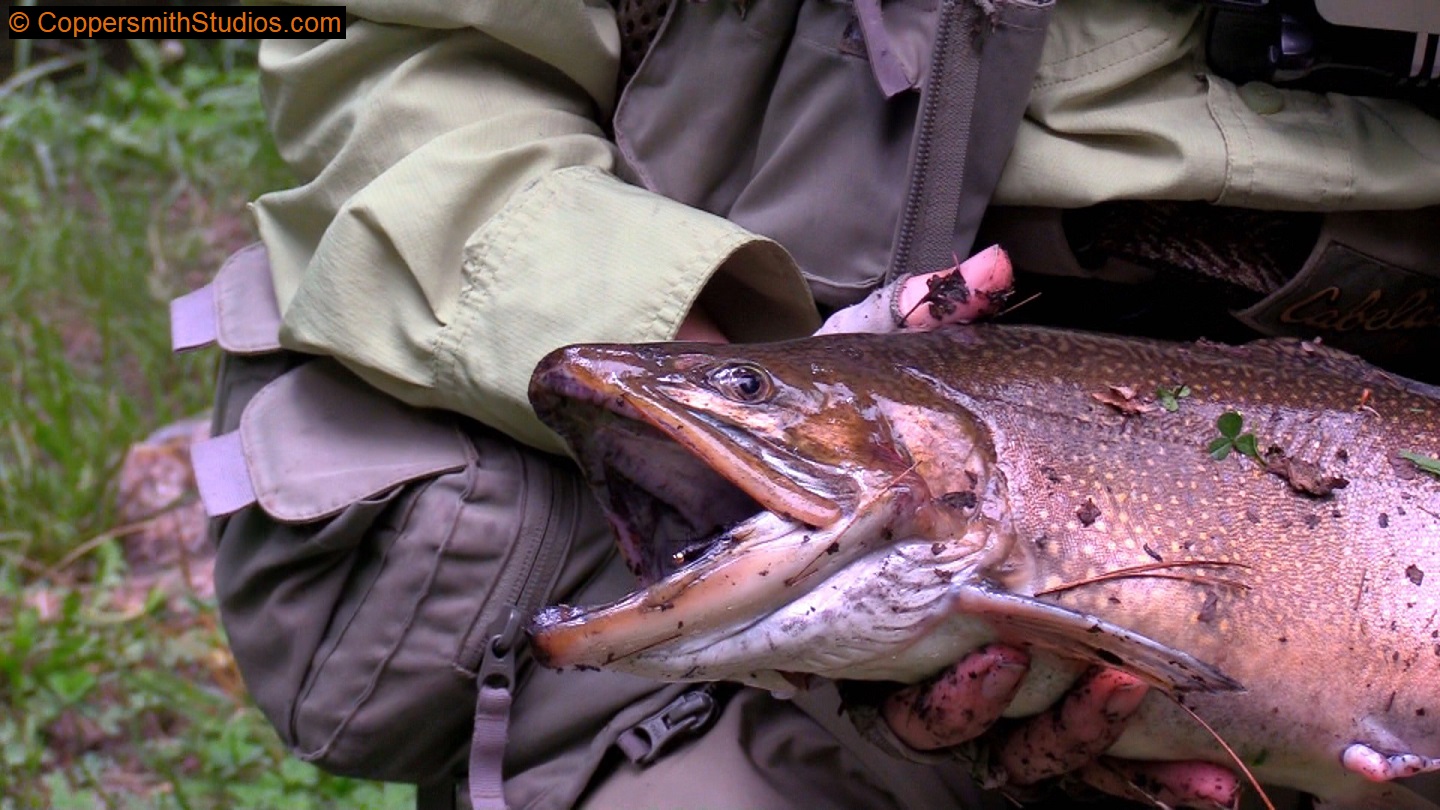 |
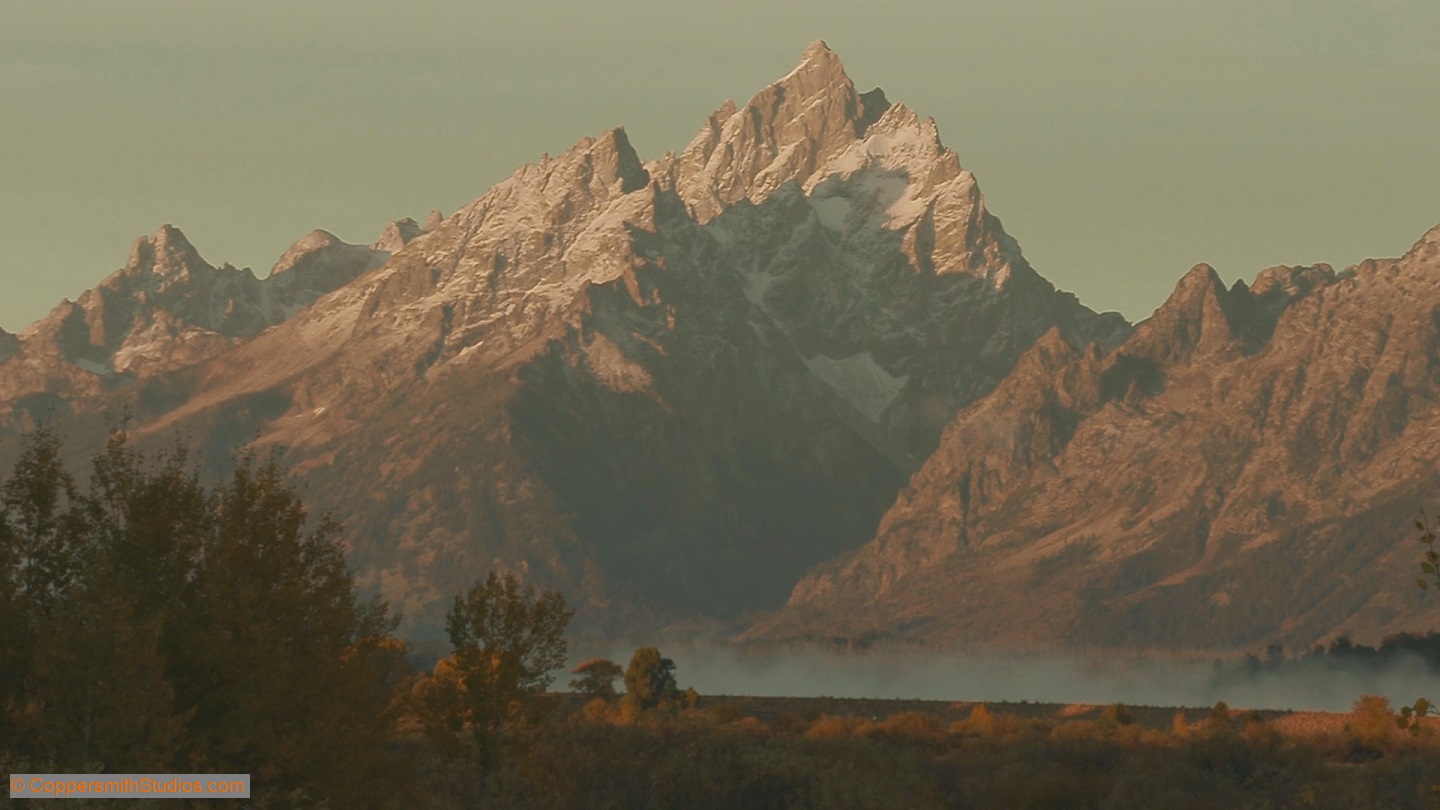 |
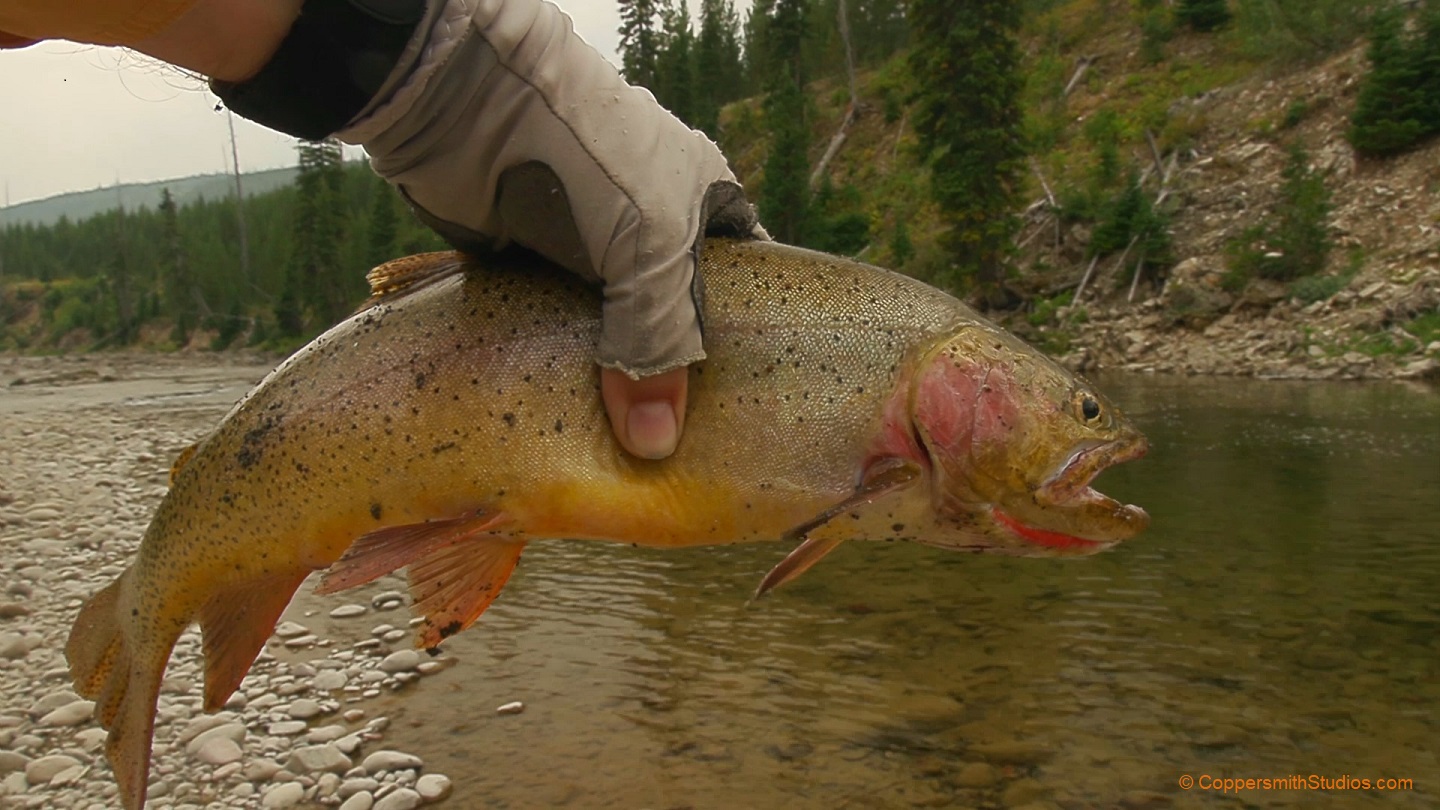 |
Stream via PATREON or CLICK BELOW TO PURCHASE.
DVD: How to Fly Fish with a Spinning Rod
DVD: Trout Streams of the Tetons
DVD: Trout Streams of Michigan, U.P. West
DVD: Trout Streams of North Carolina, West
DVD: Trout Streams of Virginia
DVD: Trout Streams of Southwest Wisconsin, North
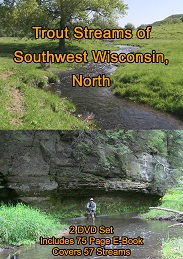
Send Email to: CoppersmithStudios@gmail.com
Part 1: QUETICO PARK, Ontario 3 week solo fishing trip in Quetico Park, Ontario
Part 2: FIRE and MISSINAIBI RIVERS 2 weeks float fishing the Fire and Missinaibi Rivers in northern Ontario.
ALBERTA Trout fishing videos of Alberta.
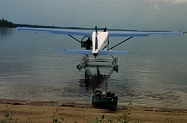 |
WATCH FIRE, MISSINAIBI & OGOKI RIVERS Slide show of my 7 week solo float fishing trip down the Fire, Missinaibi and Ogoki Rivers. |
After completing my trip down the Fire and Missinaibi Rivers I then drove for a day to reach my outfitter for the Ogoki River. The only way to reach this very remote stream is by plane, the kind that lands directly on the water. The trip would fly me out of Nakina and dropped off at Ogoki Lake. Five weeks later I would be picked up many miles downstream at Esser Lake. In between those two points were many miles of rapids, fish, danger and adventure. Not many people know about the Ogoki River. I had heard of it after reading Dan Gapen's book Fishing Rivers of the Far North. He fished the river himself and praised the giant pike, plentiful walleye and trophy brook trout to be found in this seldom traveled wilderness. It sounded like a trip of a lifetime.
They tied my fragile fiberglass canoe onto the landing float of the plane and away we went. About an hour later we landed in a secluded bay of Ogoki Lake. Before leaving the pilot explained to me that he had never landed on Esser Lake before but heard that it had a lot of shallow rocks that could damage his plane if he did not land in the proper area. On the day he would pick me up I was to find a rock free area and try to point the canoe to give him directions of where to land. So now I had another concern to worry about for the next 5 weeks. The pilot then pushed his plane off the beach, jumped back in the cockpit and flew off into the sunset. From that point there was no turning back.
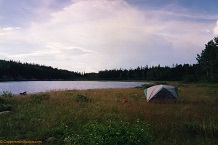 |
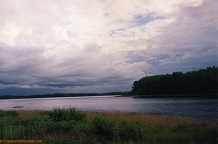 |
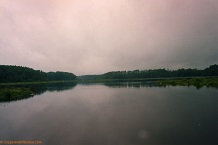 |
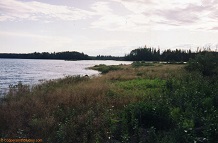 |
| Bay on Ogoki Lake | Bay on Ogoki Lake | Kayedon Lake | Kayedon Lake |
The first few days I had a nice base camp in a western bay of Ogoki Lake. This is a really large lake and is known to produce some really large northerns in excess of 30 pounds each year. There are a couple of commercially run base camps on the southern part of the lake. The first few days it rained hard most of the time. When it wasn't raining I was paddling around in the bays catching pike up to about 3 pounds on 1 oz. Dardevle spoons. I then moved a couple miles down to the next lake, Kayedon. This lake had more islands and bays and was safer to fish from a canoe. It also turned out to offer great fishing for walleyes averaging 14" to 18". There was a little current running thru this lake and when fishing a jig along a current break I would usually get good numbers of walleye. The northern fishing was also good. Most fish were from 3 to 6 pounds. Several times I had a northern attack a walleye while reeling it in.
So things started off looking good. I was catching fish, eating fish, the bugs weren't bad and I had a nice campsite on a safe lake. Then one day while I was fishing a couple of Native American Indians came by in a small motor boat. We talked for a while and they expressed surprise at seeing anyone traveling the area all alone. I asked them how the fishing was further downstream and they told me if I wanted to catch trophy brook trout I should fish the north channel of the Ogoki. There were just a few rapids in that section which needed to be portaged around and at the bottom of each rapid you could catch brook trout up to 8 pounds. Some holes would produce up to 15 fish at a time. I was a bit upset upon hearing this because my route to Esser Lake was through the south channel, which according to the Indians had no brook trout. One of them also said he caught a 98 pound sturgeon from Ogoki Lake a week ago.
Soon after that I began to get curious about what was downstream, so I packed up my campsite and headed for the outlet east of Kayedon Lake. The first thing downstream was Speckled Rapids, a mile long stretch of whitewater that I would have to carefully navigate in my fiberglass canoe. I recall bringing my ultralight rod with me while I was scouting the rapids from the shoreline. While vertically jigging my 1/8th oz twister tail in a small eddy just a couple feet from where I was standing I hooked into a fat 6 pound pike. Apparently the fish was exhausted from swimming in the rapids because it didn't even attempt to put up a fight. If it had it would have won because there was no way my ultralight could have held out against the strong current just outside of the eddy.
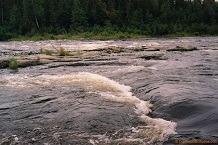 |
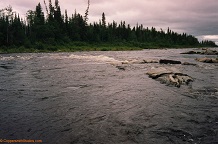 |
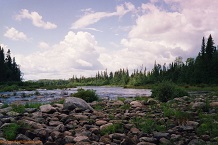 |
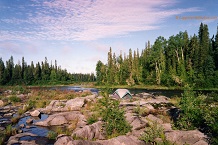 |
| Ogoki River Speckled Trout Rapids | Ogoki River Speckled Trout Rapids | Ogoki River | Ogoki campsite |
I would scout a short distance of the rapids, figure out the best route to take, then canoe a bit, then pull over and scout the next section, being very careful about everything as this was all a risky endeavor. If I crashed and destroyed my canoe no one was going to know where I was and no one was going to come looking for me. The next section of rapids was a bit tricky. I would have to pass along the right bank and then cut over to the left bank to portage around a 4 foot waterfall. It looked doable. I got in my canoe, passed along the right bank and then paddled hard to the left. However I miscalculated the current speed and found myself being taken downstream to the waterfall. From my scouting I knew there were pointy rocks sticking up just beyond the waterfall and if I landed on anyone of them it would destroy my canoe. There was nothing I could do to avert flying backwards over the waterfall. I ducked down to the bottom of my canoe and closed my eyes, fearing the worse. For about 2 seconds I could sense the canoe was air born and then it landed with a loud splash. I got up and looked around. Miraculously I landed in the one spot where there were no pointy rocks sticking out. I was lucky.
From that point on I realized that perhaps going down the Ogoki River in a fragile fiberglass canoe by myself was not the wisest thing to do. I had enough adventure for the day and setup my tent on a big rock slab just below the waterfall. I then proceeded to catch a dozen walleye and 10 pike in one hour from that spot. The walleye were mostly 17"-20" and the pike were mostly between 4 and 6 pounds. Three of the pike looked suspiciously familiar and may have been caught twice. OK, so maybe it wasn't wise to fish the Ogoki by myself but the fishing was certainly good!
I spent the next day in my tent listening to the incessant rain that kept coming down and the day after continued on my journey. All of the rain over the past week raised the river levels by a couple feet. This raised the water level over a lot of rocks making it easier for my canoe to get down the river in one piece. Looking back I don't think I would have survived the trip if the water hadn't been so unseasonably high. However the high water also made the current more swift and powerful and any mistake could translate into immediately catastrophe. The shoreline on this river is mostly barren rock. This made it easy to walk along the shoreline and scout out the next rapids. When doing this I always brought my fishing rod and would commonly catch walleyes and a few northern taking refuge behind the large boulders. Most of the walleye were 16"-18" and the pike were usually 4 to 6 pounds. After a while I caught so many pike I would try my best to shake them off while they were still in the water because I was tired of their slime getting into my canoe. My favorite lure was a black 1/4th oz branson bug, a twister tail type jig with a little spinner under the head and jigged weedless like a plastic worm. It would catch both pike and walleye with equal effectiveness.
 |
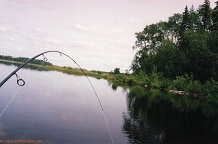 |
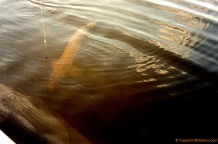 |
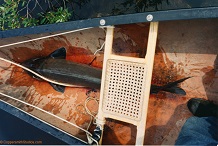 |
| Below Harrogate Lake | Fighting a sturgeon | 35 pound sturgeon on the line | 35 pound sturgeon in the boat |
After 10 days of slowly making my way down the Ogoki I came to Harrogate Lake. There is a commercial fly-in base camp on this lake and 2 motor boats were present. Not being fond of company on my wilderness trips I quickly passed thru it, but did make a few casts and picked up several 5 pound pike on a 1 oz Syclops spoon. A few miles below Harrogate Lake is Patience Lake. This is a shallow, narrow, twisting lake about 4 miles long with a lot of boulders scattered about it. Between its islands are channels with a stiff current.
There are no fly-in out posts here as it is too dangerous to land a plane. The whole area looked totally uninhabited. I setup a base camp and stayed a couple weeks. The lake was not as productive as the river or the other lakes but it did have one fish in abundance: sturgeon. It was truly odd to sit quietly in a canoe on this lake and listen carefully because you could hear the sturgeon bumping their hard cartilage noses into the submerged boulders while they swam about the dark waters of this shallow lake. When I first started my trip several weeks ago I had 6 dozen night crawlers with me. Now I had just a couple worms left. I saw a sturgeon splash on the surface not far from my canoe and decided to put the last couple onto the biggest hook I had and tossed them in that direction. 10 minutes later my line started to twitch. I waited a minute longer and then set the hook. The fish took off immediately and I knew I had something big. After 30 seconds I realized if I continued to just sit there and let it pull out line it would get too far away and eventually get snagged. With 1 hand holding the rod I proceeded to pull up my anchors. The canoe then began to drift towards the behemoth fish and I began retrieving some of my line.
The fish stayed deep as it steadily tugged my canoe about a half mile down the lake. My line was rated at 20 pounds but my rod was only rated for 12, so I had to be more careful of my rod breaking than my line. At one point I was finally directly above the fish and began pulling it to the surface. Never before in my life did I ever have a reaction of fear when seeing what was on my line, but this thing was so huge it made me afraid. Keep in mind I was all by myself in a little canoe in a giant wilderness. If I reached down and grabbed that fish I was afraid it would pull me back into the water with it - and eat me for all I knew! With one arm I paddled the canoe to a shallower weed free shoreline and threw the anchor on the shore to keep the fish from wrapping around it. Now if the boat tipped over while landing it I at least stood a chance of retrieving my gear in the shallower water. There was no way the fish would fit in my net so I decided to hand land it. The next time I pulled it nearby I grabbed its nose, set my rod down and then grabbed the gill, got a good grip and then hoisted it onboard.
Sturgeon are known to be passive when brought into the boat. This fish laid on the bottom and didn't cause any trouble. It measured 52 inches long. My scale only went up to 20 pounds but I looked up a chart that predicted such a fish to be 35 pounds which I thought was about right. After a quick picture I threw the mighty fish back in the water and watched it swim away. Sturgeon are known as a very hardy fish and I do hope the event didn't decrease its lifespan.
From Patience Lake the Ogoki River breaks up into a north channel, south channel and middle channel. According to the Native American Indians I met the north channel contained lots of brook trout. This channel started out from below Patience Lake with a ¼ mile long rapids that was not runnable and a big hole at the base of the rapids. I hiked down to the base of the rapids and fished small yet heavy spoons for the big brookies but caught nothing. If I only knew then what I know now about trout fishing I may have caught some real trophies. Those heavy spoons were probably scaring the fish and I was using a green color, which experience has since shown to be the worst color for catching trout. Red, yellow or black would have been better. If I had used a lighter spoon or lure and tied a small fly to the back, perhaps 18" behind, that would have had better luck. As a last resort I could have dug up some bugs or worms and tried those. How often does a person have a chance at catching an 8 pound brook trout? But back then I didn't much know how to fish for trout.
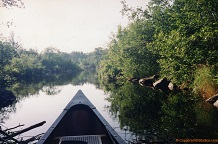 |
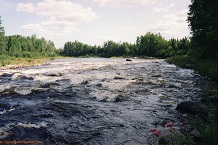 |
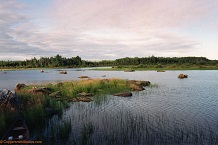 |
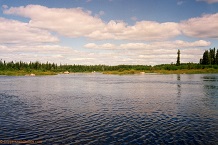 |
| Middle channel Ogoki River | South channel Ogoki River | Patience Lake | South channel Ogoki River |
I spent a day exploring the middle channel. It was small, scenic and fun to canoe but it didn't seem to have any fish. Half the time spent on Patience Lake I stayed in my tent to seek refuge from the persistent rain or strong winds. I caught a lot of northerns so I at least had food to eat but they were on the small side, usually 1 to 3 pounds. After 2 weeks I lost my patience and left the lake of the same name and began my journey down the south channel Ogoki River. The river seemed particularly high from all of the rain and was difficult to fish. It was also dangerous to be on. I spent 2 days paddling and portaging the rapids until I came to my last stop, Esser Lake.
Esser Lake is somewhat similar to Patience Lake. It is shallow with extensive wild rice beds and boulders protruding from the surface. I was concerned about the pilot landing here to pick me up and destroying his plane. I made camp on a small island in the center of the lake. There were two places I could put my tent. The better spot was right next to a tree that a beaver had been chewing on and I decided to resist temptation and use the other spot as that would be safer. The next day a fierce wind blew all day long and so I stayed in my tent. During the afternoon I heard the big tree fall. It landed exactly where I was planning to setup my tent. It pays to be cautious!
I spent about a week on Esser Lake catching northern pike up to 5 pounds when the weather permitted. Most of the time it was rainy and windy. The weather can be a problem as you get closer to James Bay. Two days before my plane was due to arrive a different plane landed to drop off some fishermen at a base camp. The pilot was familiar with the lake and knew which part was safe to land. I paddled over to the plane and asked for a ride back. He agreed, for a price, and in 1 hour I was up in the air and headed home. The people who had been dropped off said they fished the lake last year and did very well for walleye and big northerns.
That was my trip. Had I been a better fisherman I would have caught a lot more fish. Had my luck been not as fortunate I may not have survived the many dangers. Had I owned the good film equipment I now have I would have had one heck of a video to show!
Created by: Dan Coppersmith 2023| www.CoppersmithStudios.com